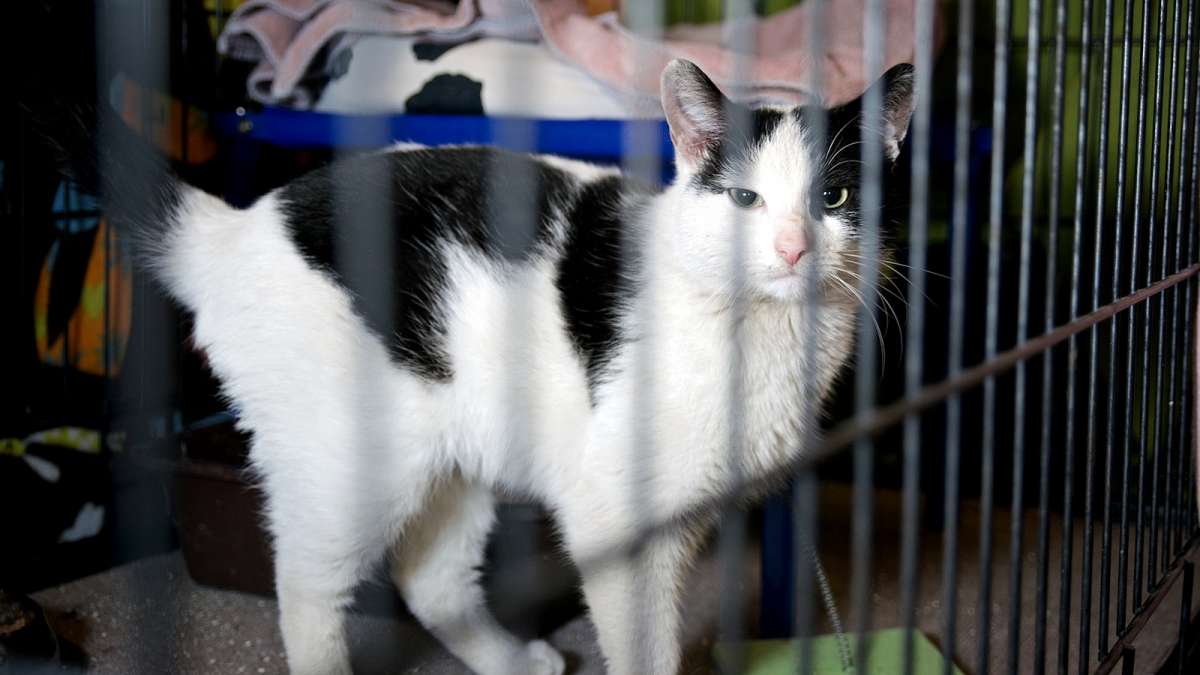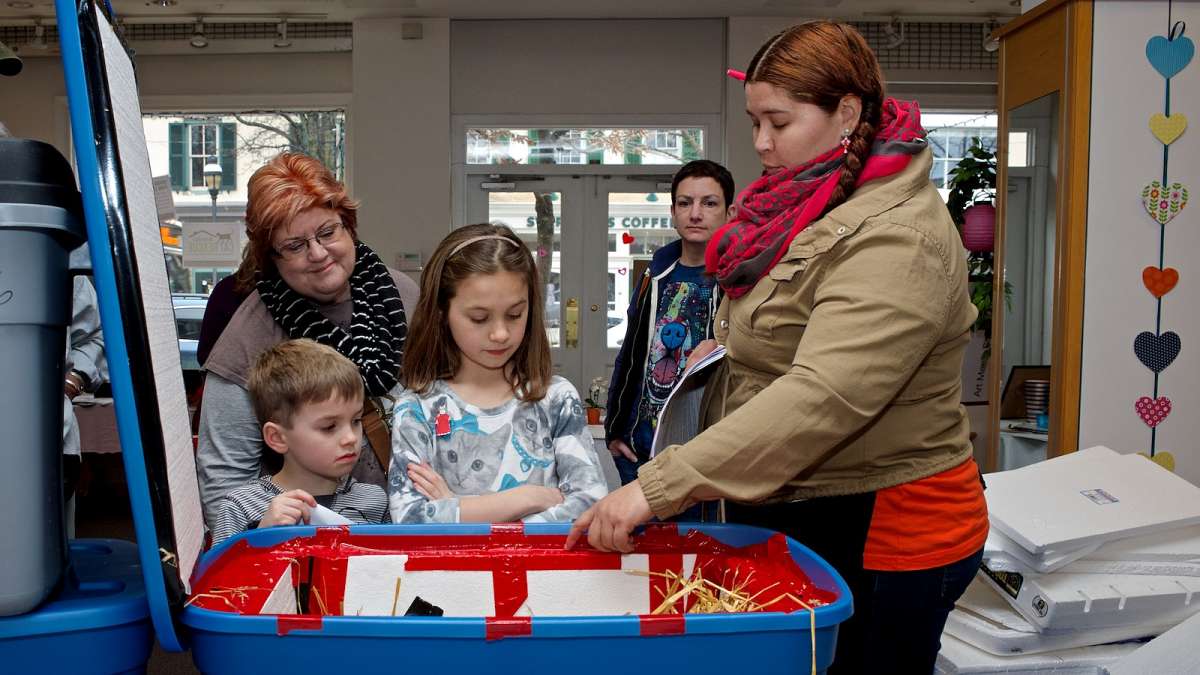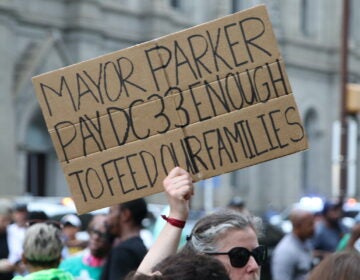Stray cats in Philly get a helping hand with Chestnut Hill workshop
For Aine Doley, the new coordinator of Philly’s Community Cats Project, helping stray and feral cats is all about the outreach. And that outreach doesn’t stop at animal lovers.
“We want to work with people who have problems with cats as much as people who love cats,” Doley told NewsWorks at a workshop in Chestnut Hill last week. An enthusiastic handful of participants learned how to build sturdy, effective and affordable backyard shelters for “community cats.”
The Community Cats Project, launched last year, is a local partnership of Best Friends Animal Society (a group dedicated to no-kill solutions to dog and cat overpopulation) and PetSmart Charities, funded with a three-year, $800,000 grant via PetSmart Charities that covers the costs associated with their trap-neuter-return initiative.
A middle ground for homeless cats
Frostbite and hypothermia can affect free-roaming cats in the winter, which by some counts number as many as 400,000, Doley said. Those concerned for the cats’ welfare — particularly cats who have been sterilized and vetted through the TNR program but who aren’t good candidates for adoption — can help by building a compact, unobtrusive shelter for cats that need to keep warm.
The workshop took place in a Chestnut Hill storefront just a few steps from the Chestnut Hill West train station, a formerly vacant space which Beaumont Properties has leased to the local all-volunteer non-profit Brenda’s Cat Rescue as a pop-up adoption center.
“I’ve been rescuing cats since I was seven,” said founder Brenda Malinics, who achieved 501 (c) 3 status for her organization last year, and she’s been “rescuing cats intensively for the last 20 years.”
Malinics is also a licensed worker of the Pennsylvania Game Commission who specializes in bat management, and a longtime volunteer at the Schuylkill Wildlife Rehabilitation Center, among others.
An inviting atmosphere for cats and humans
Brenda’s Cat Rescue has been operating out of the Chestnut Hill storefront since February. Currently on a month-to-month lease, they’re open for prospective feline parents from 11 a.m. to 5 p.m. every Saturday in March. As of March 14, Malinics said the location had facilitated 31 cat adoptions (a three-fold increase in what the organization had been able to achieve by this time in 2014), welcomed 1,300 people to the space and dealt with an additional 75 cats through its TNR program.
“It’s a warm and inviting atmosphere, and the community has embraced it,” she added, saying it was a more positive and welcoming environment than a typical city animal shelter, and that it benefits from the high foot traffic along Germantown Avenue.
“We take the time that animals need to assess and understand their situations,” Brenda’s Cat Rescue volunteer Tracie Lango said of the group’s careful approach. A $100 adoption fee helps to cover everything from the spay/neuter operation to necessary vaccinations and medical care, ensuring the cats are healthy and free of all internal and external parasites before they go to new homes. There are also no same-day adoptions, as Brenda’s workers ensure that each family is a good match for their chosen cat.
Maria Sisto and her 11-year-old daughter Zoe, of Chestnut Hill, were among those who dropped by on Sunday to meet the cats up for adoption. They already have two rescued cats at home, as well as two dogs, but couldn’t resist stepping in to look.
“People think cats are aloof, but they’re not at all,” Sisto said. Cats are just a bit more “nuanced” than dogs in how they approach us, she insisted.
Sheltering cats at home
Meanwhile, Doley taught workshop participants how to build cat shelters out of large lidded plastic tubs, available for as little as $10 at stores like Home Depot. The tubs are lined with insulating Styrofoam (secured with duct tape), which can often be salvaged for free from various stores or shelters or veterinary offices. The tubs get a five-inch hole in the side for cats to come and go, and are filled with heat-trapping, moisture-resistant straw. A little catnip to lure in the right resident finishes off the structure, which can fit neatly into any backyard.
Doley emphasized that the Community Cats Project can aid people who want to feed and shelter stray cats as well as people who want to deter or remove them: upon request, project funds also go to providing free audio devices that help to harmlessly keep cats away.
Millions of cats
The ultimate goal is humanely reducing the number of stray cats in our streets and preventing the birth of kittens which will be euthanized in shelters by the thousands. In the space of nine years, SpayUSA estimates that the descendants of one un-neutered pair of cats (assuming a rate of two litters per year among their offspring, with less than three surviving kittens per litter) can top 11,600,000 kitties. The Community Cats Project’s goal is to humanely trap, neuter and return 4,000 cats a year.
Doley said this approach is a sustainable third option between adoption and euthanasia for Philly’s exploding cat population, and she’ll talk about it with anyone, from cat lovers to people who want those cats out of their garden.
She added that with programs like this in place, “Every cat that you see outside is not in jeopardy.”
WHYY is your source for fact-based, in-depth journalism and information. As a nonprofit organization, we rely on financial support from readers like you. Please give today.



















